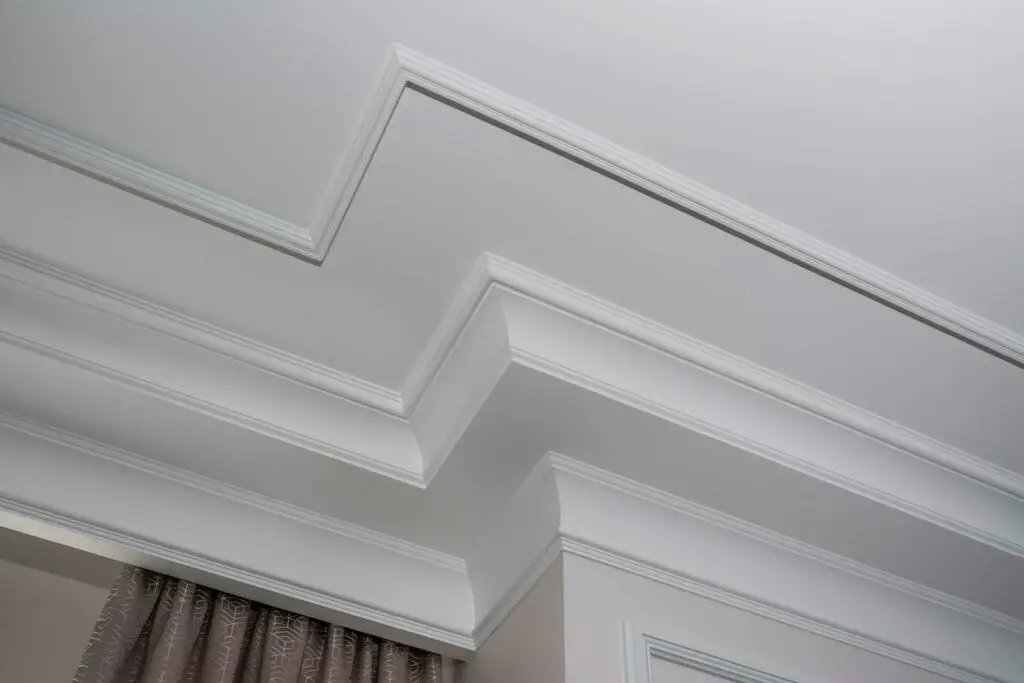Are you tired of looking at scuffed, chipped, or dingy trim and baseboards? These areas are often overlooked when it comes to home improvement, but they can make a big impact on the overall appearance of a room. The right paint can transform these areas from dull to dazzling. In this article, we’ll take a look at the best paint for trim and baseboards, so you can give your home the upgrade it deserves.
So what’s the deal: what’s the best paint for trim & baseboards?
Oil-based paints are the gold standard for trim and baseboards due to their durability, smooth finish, and resistance to wear. However, water-based paints, especially acrylic-alkyd hybrids, are gaining popularity for their easy cleanup and lower VOC content. Brands like Benjamin Moore and Sherwin Williams offer top-quality options in both categories, with semi-gloss finishes being the most preferred for their blend of shine and ease of cleaning.
Case closed.
Right?
Not so fast. There’s more to choosing the right paint than just
First, let’s talk about why it’s important to choose the right paint for these areas. Trim and baseboards are high-traffic areas, which means they’re prone to wear and tear. The paint you choose needs to be durable enough to withstand regular cleaning and the occasional bump from a vacuum cleaner or piece of furniture. Additionally, you want a paint that will adhere well to the surface and provide good coverage, so you don’t have to spend hours applying multiple coats.
So, what is the best paint for trim and baseboards? There are a few different options to consider, each with its own pros and cons. In my experience, the best paints for these areas are ones that are specifically formulated for trim and baseboards. These paints are designed to be durable, easy to clean, and provide good coverage. But which brand should you choose? Keep reading to find out.
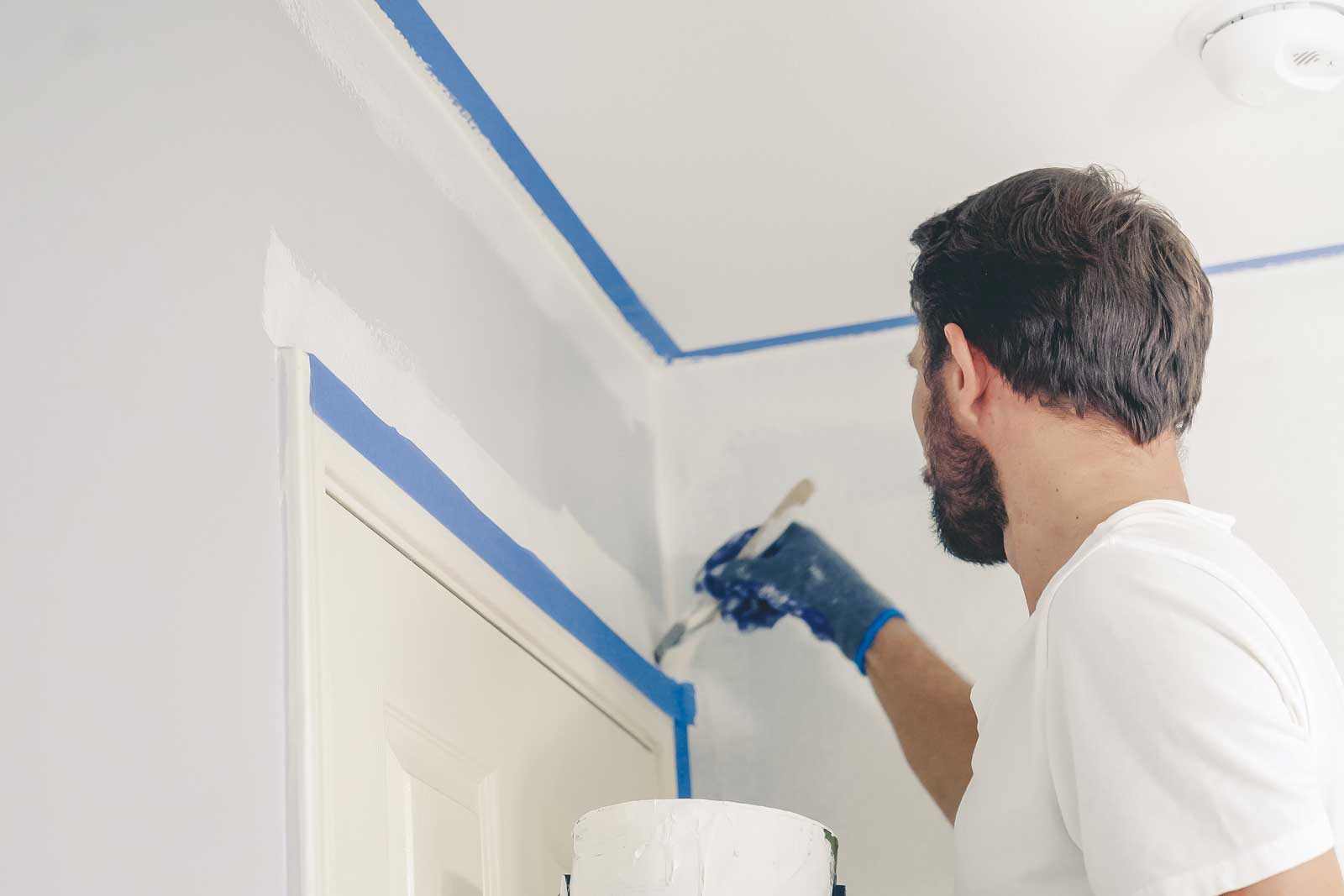
What Paint Works Best For Trim & Baseboards?
Are you wondering what the best paint is for your trim and baseboards? Look no further! In this section, we will discuss the pros and cons of oil-based and water-based paints for trim and baseboards, and provide recommendations for the top choices.
Oil-Based Paint vs. Water-Based Paint: Pros and Cons for Trim and Baseboards
When it comes to painting trim and baseboards, you have two options: oil-based or water-based paint. Here are the pros and cons of each:
Oil-Based Paint
Oil-based paint has been the go-to choice for trim and baseboards for many years. Here are the pros and cons:
Pros
- Durable: Oil-based paint is more durable than water-based paint, making it a great choice for high-traffic areas like trim and baseboards.
- Smooth finish: Oil-based paint dries slower, allowing it to level out and create a smooth finish.
- Stain-resistant: Oil-based paint is more resistant to stains and can be easily cleaned with soap and water.
Cons
- Longer drying time: Oil-based paint takes longer to dry than water-based paint, which can be inconvenient if you need to use the space quickly.
- Strong odor: Oil-based paint has a strong odor and requires proper ventilation during application.
- Yellowing: Over time, oil-based paint can yellow, especially in areas with little natural light.
Water-Based Paint
Water-based paint, also known as latex paint, has become increasingly popular in recent years. Here are the pros and cons:
Pros
- Quick drying time: Water-based paint dries faster than oil-based paint, allowing you to use the space sooner.
- Low odor: Water-based paint has a low odor and is easier to clean up with soap and water.
- Color retention: Water-based paint is less likely to yellow over time, especially in areas with little natural light.
Cons
- Less durable: Water-based paint is less durable than oil-based paint and may not hold up as well in high-traffic areas.
- Thinner consistency: Water-based paint has a thinner consistency, which can make it more difficult to achieve a smooth finish.
- More prone to brush marks: Water-based paint can be more prone to brush marks, especially if you don’t use the right tools.
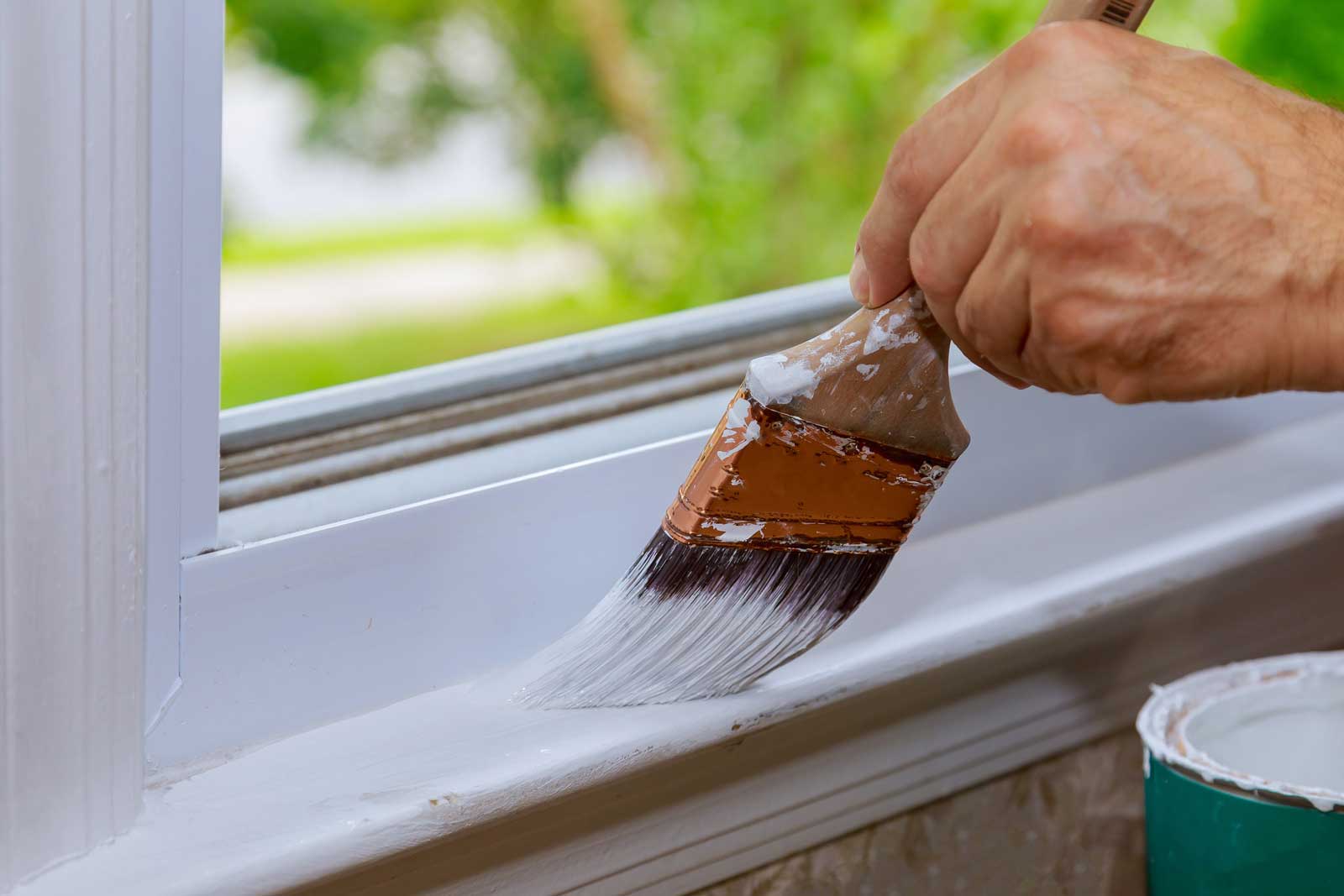
Top Paints For Trim & Baseboards: Benjamin Moore and Sherwin Williams are Top Choices
Now that you know the pros and cons of each type of paint, you may be wondering which brand to choose. In my experience, Benjamin Moore and Sherwin Williams are two of the top choices for trim and baseboards.
Benjamin Moore’s Advance line is a popular choice for trim and baseboards, as it is a waterborne alkyd paint that combines the durability and smooth finish of oil-based paint with the quick drying time and easy cleanup of water-based paint.
Sherwin Williams’ ProClassic Interior Waterbased Acrylic-Alkyd line is another great option, as it also combines the durability and smooth finish of oil-based paint with the easy cleanup of water-based paint.
When it comes to painting your trim and baseboards, you have two options: oil-based or water-based paint. Each has its pros and cons, so it’s important to choose the right one for your space. If you’re looking for top-quality brands, Benjamin Moore and Sherwin Williams are two great choices to consider.
Understanding Paint Types for Trim and Baseboards
As you embark on your journey to update your home’s trim and baseboards, choosing the right type of paint is critical. Not all paints are created equal, and selecting the right one can make all the difference in the final outcome of your project. In this section, we’ll explore the different types of paint available for trim and baseboards, and highlight their unique properties and best use cases.
Acrylic-Alkyd Hybrid Paints: Why They Might Be the Perfect Middle
Acrylic-alkyd hybrid paints are a relatively new type of paint that combines the best properties of both acrylic and alkyd paints. They have the durability and smooth finish of alkyd paints, while also being low-VOC and easy to clean up like acrylic paints.
In my experience, acrylic-alkyd hybrid paints are an excellent choice for trim and baseboards in high-traffic areas, such as hallways and entryways. They offer excellent adhesion and durability, which means they’ll hold up well to wear and tear. Additionally, they dry quickly, which is a significant advantage when painting trim and baseboards.
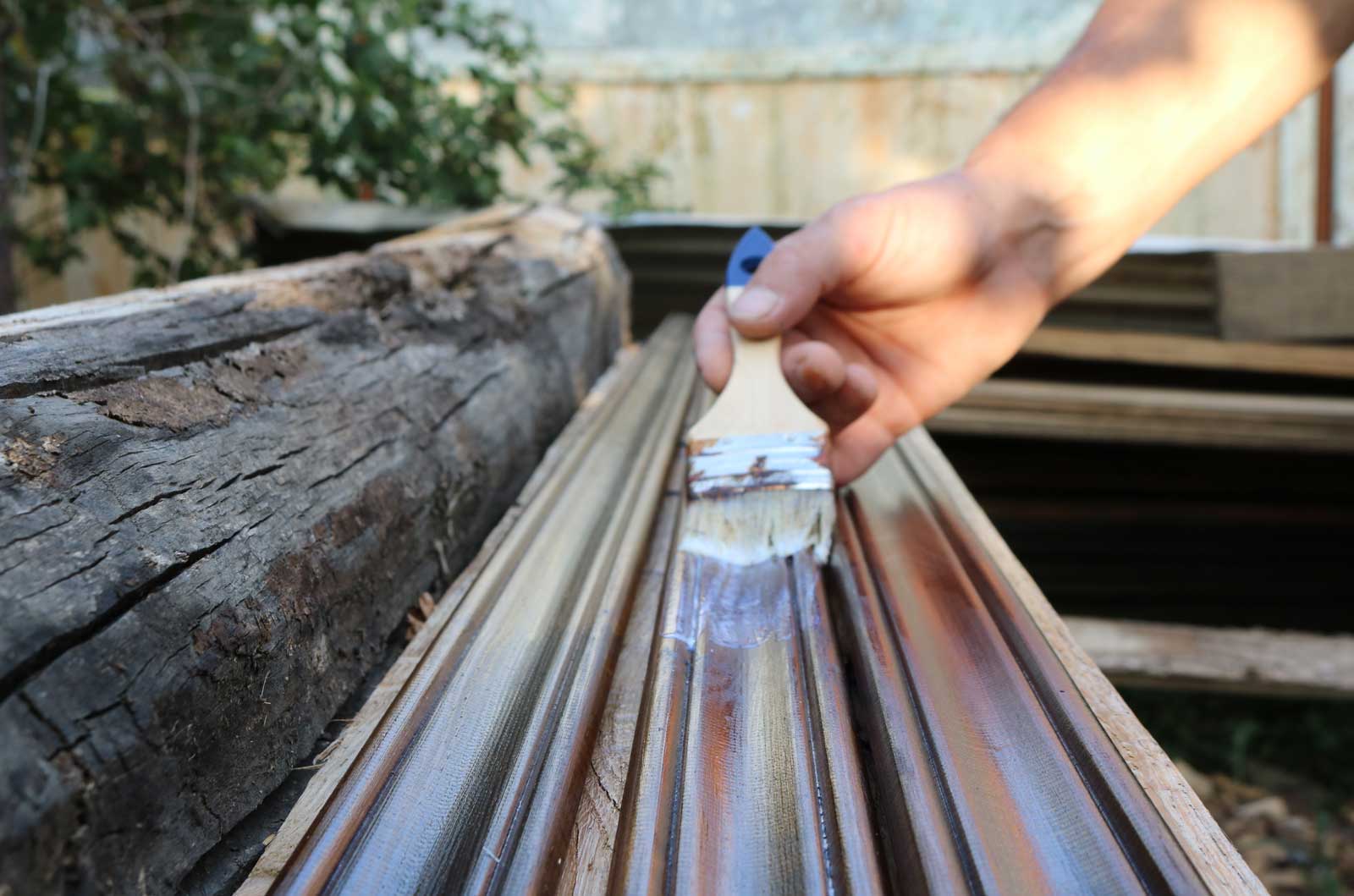
Oil-Based Paint: Benefits and When to Choose It
Oil-based paint has been around for centuries and is a popular choice for trim and baseboards. It offers excellent adhesion and durability, making it ideal for high-traffic areas. Additionally, oil-based paint provides a smooth, glossy finish that is easy to clean.
If you’re looking for a paint that will last for years, oil-based paint is an excellent choice. It’s also a great option if you’re painting over an existing oil-based paint, as it will adhere well to the surface. However, keep in mind that oil-based paint takes longer to dry than other types of paint and has a strong odor, so proper ventilation is critical.
Water-Based Paint: Advantages and Suitable Scenarios
Water-based paint, also known as latex paint, is a popular choice for trim and baseboards. It’s easy to clean up and dries quickly, making it an excellent option for DIYers. Additionally, water-based paint is low-VOC, which means it’s environmentally friendly and safe to use indoors.
In my experience, water-based paint is an excellent choice for trim and baseboards in low-traffic areas, such as bedrooms and bathrooms. It provides a smooth finish and is easy to touch up if needed. However, keep in mind that water-based paint may not be as durable as oil-based or acrylic-alkyd hybrid paints.
Acrylic Paints: Their Unique Properties and When to Use Them
Acrylic paint is a popular choice for trim and baseboards because it’s easy to work with and dries quickly. It’s also low-VOC, which means it’s safe to use indoors. Additionally, acrylic paint is water-resistant, which makes it ideal for bathrooms and kitchens.
If you’re looking for a paint that’s easy to apply and dries quickly, acrylic paint is an excellent choice. It’s also a great option if you’re looking for a low-VOC paint. However, keep in mind that acrylic paint may not be as durable as other types of paint, so it may not be the best choice for high-traffic areas.
There you have it – a breakdown of the different types of paint available for trim and baseboards. Remember to consider the unique properties of each type of paint and choose the best one for your specific project.
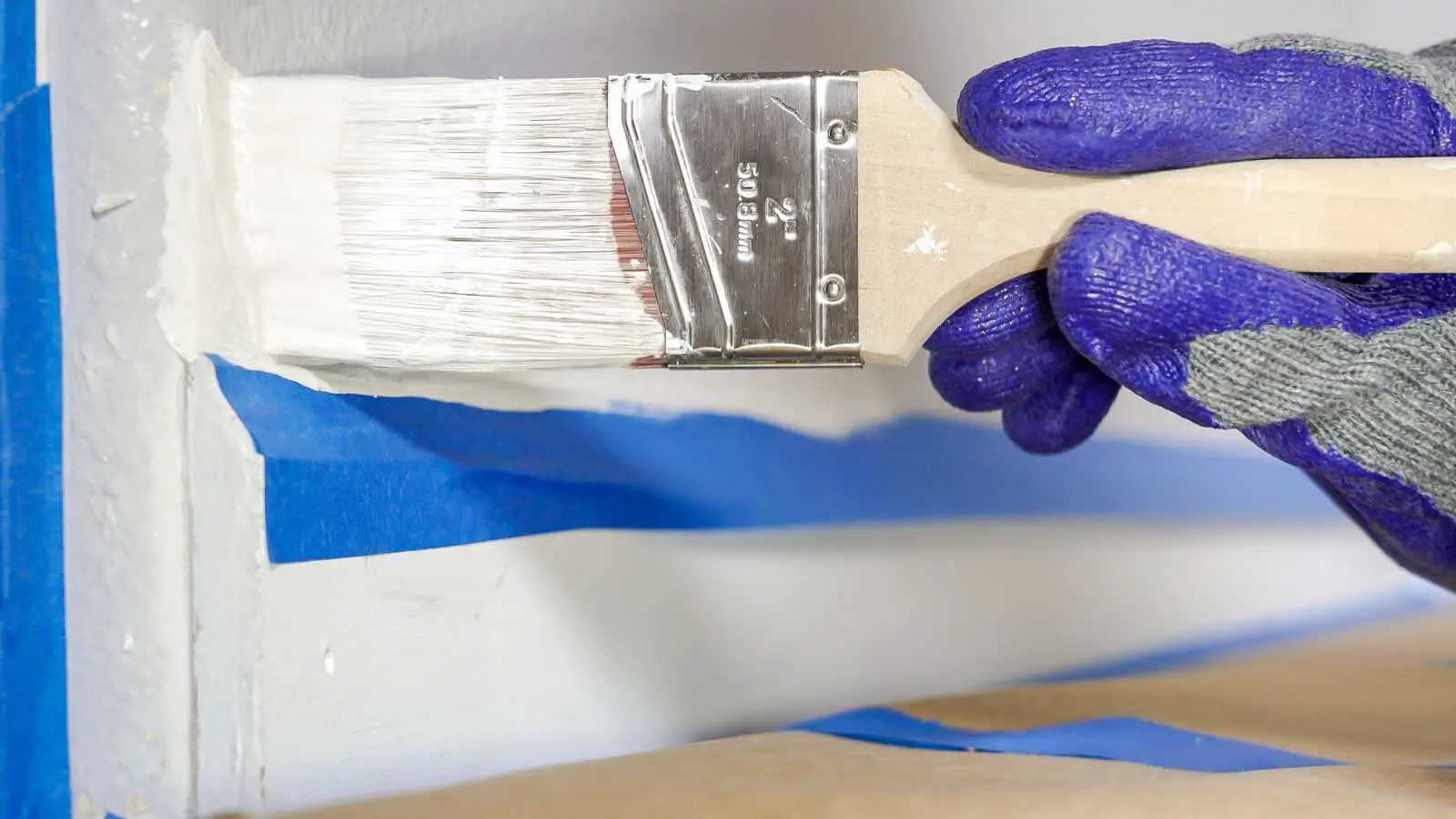
Diving Deep into Paint Finishes
When it comes to painting trim and baseboards, choosing the right paint finish can make all the difference. Not only does it affect the overall look and feel of your room, but it also impacts durability and ease of maintenance. In this section, we’ll dive deep into paint finishes and explore the different types available.
Satin Finish vs. Semi-Gloss Finish: Which is Better and Why
Satin and semi-gloss finishes are among the most popular options for trim and baseboards. Satin finishes have a soft sheen that falls between a matte and a gloss, while semi-gloss finishes have a higher sheen and reflect more light. But which is better for your home?
In my experience, satin finishes are a great choice for rooms with low to moderate traffic, such as bedrooms and living rooms. They offer a subtle sheen that adds depth and dimension to your walls without being too shiny or distracting. On the other hand, semi-gloss finishes are ideal for high-traffic areas like kitchens, bathrooms, and hallways. They’re more durable and easier to clean, making them a practical choice for surfaces that get a lot of wear and tear.
The Role of Sheens: Different Sheens and Their Impact on Aesthetics
Sheen is another important factor to consider when choosing a paint finish for your trim and baseboards. Different sheens can create different effects and impact the overall aesthetics of your room.
Flat finishes have no sheen and are ideal for hiding imperfections on walls and ceilings. Eggshell finishes have a slight sheen and are easy to clean, making them a good choice for high-traffic areas. Satin finishes have a soft sheen that adds depth and dimension to your walls without being too shiny or distracting. Semi-gloss finishes have a higher sheen and reflect more light, making them ideal for surfaces that need to be durable and easy to clean. Finally, gloss finishes have the highest sheen and are great for creating a dramatic, high-gloss look.
In my experience, choosing the right sheen depends on the look and feel you’re going for in your room. If you want a subtle, sophisticated look, go for a flat or eggshell finish. If you want to add some depth and dimension, choose a satin finish. If you want a high-gloss, dramatic look, go for a gloss finish.
The Rising Trend of Matte Finishes
Matte finishes are becoming increasingly popular for trim and baseboards. They have a soft, velvety finish that adds a touch of elegance to any room. But are they practical?
In my experience, matte finishes are a great choice for rooms that don’t get a lot of traffic, such as bedrooms and dining rooms. They offer a unique, sophisticated look that can’t be achieved with other finishes. However, they’re not as durable as other finishes and can be difficult to clean. If you’re considering a matte finish for your trim or baseboards, be prepared to touch up scuffs and marks more frequently than you would with other finishes.
Overall, choosing the right paint finish for your trim and baseboards depends on your personal preferences and the specific needs of your home. By considering factors like sheen, durability, and ease of maintenance, you can make an informed decision that will enhance the beauty and functionality of your space.
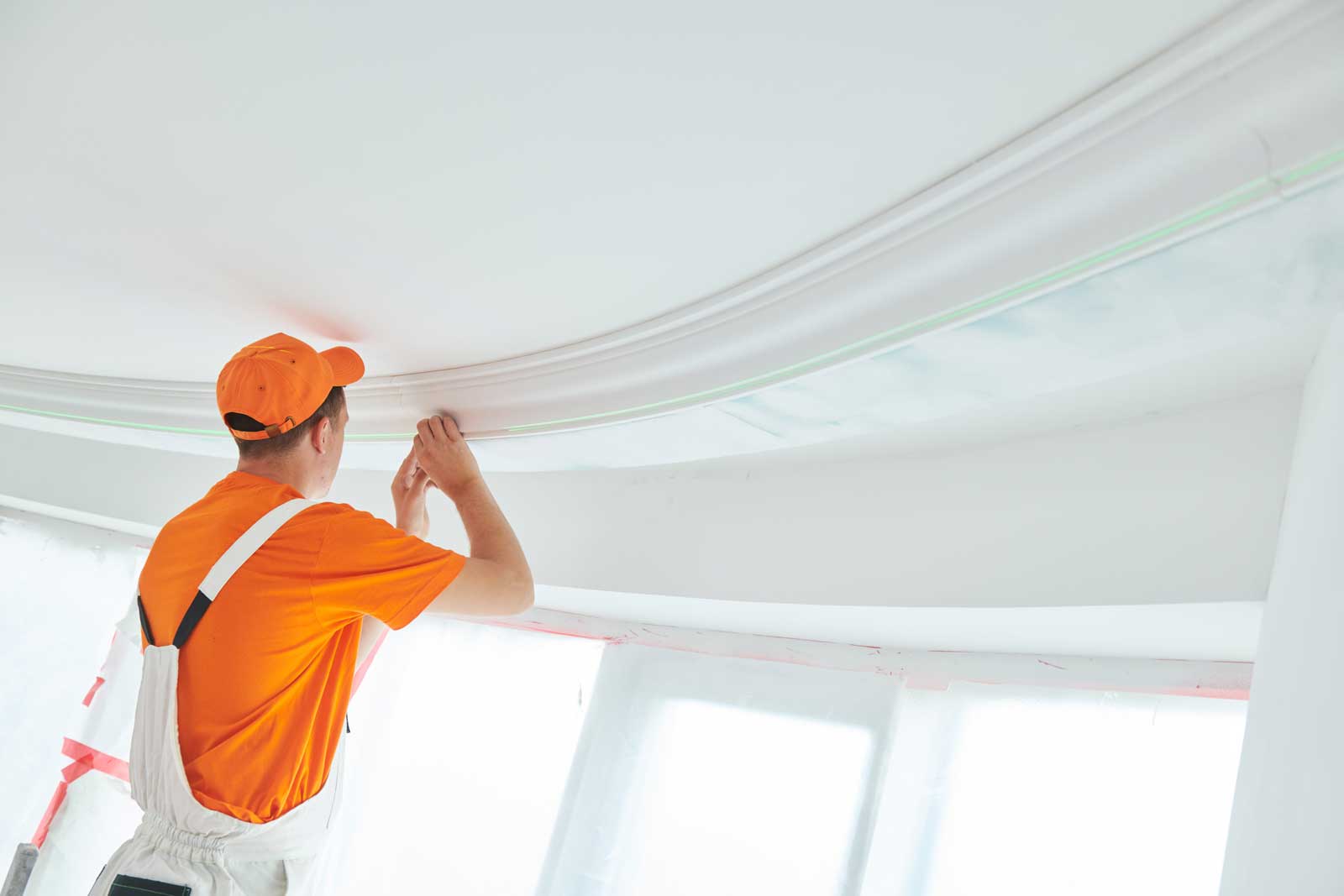
Specific Painting Scenarios
As you embark on your trim and baseboard painting journey, you may encounter specific scenarios that require a bit of extra attention. In this section, we’ll cover three common scenarios: painting crown molding, interior doors, and baseboards.
Painting Crown Molding: Tips and Best Practices
Crown molding can add a touch of elegance to any room, but it can also be a bit tricky to paint. Here are a few tips to help you achieve a flawless finish:
- Start by cleaning the molding with a mixture of warm water and mild soap. Rinse thoroughly and let dry completely.
- Use a high-quality brush to apply the paint. A brush with angled bristles will make it easier to reach tight spaces.
- Apply a thin coat of paint, making sure to brush in the direction of the wood grain. Let the paint dry completely before applying a second coat.
- If you’re painting over an existing coat of paint, be sure to sand it down first to create a smooth surface for the new paint to adhere to.
In my experience, using a high-quality paint with a semi-gloss or high-gloss finish can help to highlight the details of the molding and create a polished look.
Interior Doors: Which Paint Works Best
Interior doors are often subjected to a lot of wear and tear, so it’s important to choose a paint that can stand up to the challenge. Here are a few options to consider:
- Oil-based paint: This type of paint is durable and provides a smooth, even finish. However, it can take a long time to dry and has a strong odor.
- Acrylic paint: Acrylic paint is water-based, dries quickly, and has a low odor. It’s also easy to clean up with soap and water. However, it may not be as durable as oil-based paint.
- Enamel paint: Enamel paint is a type of oil-based paint that dries to a hard, glossy finish. It’s extremely durable and easy to clean, but it can be difficult to work with and has a strong odor.
No matter which type of paint you choose, be sure to prep the door properly by cleaning it thoroughly and sanding down any rough spots. Applying a primer before painting can also help to create a smooth, even finish.
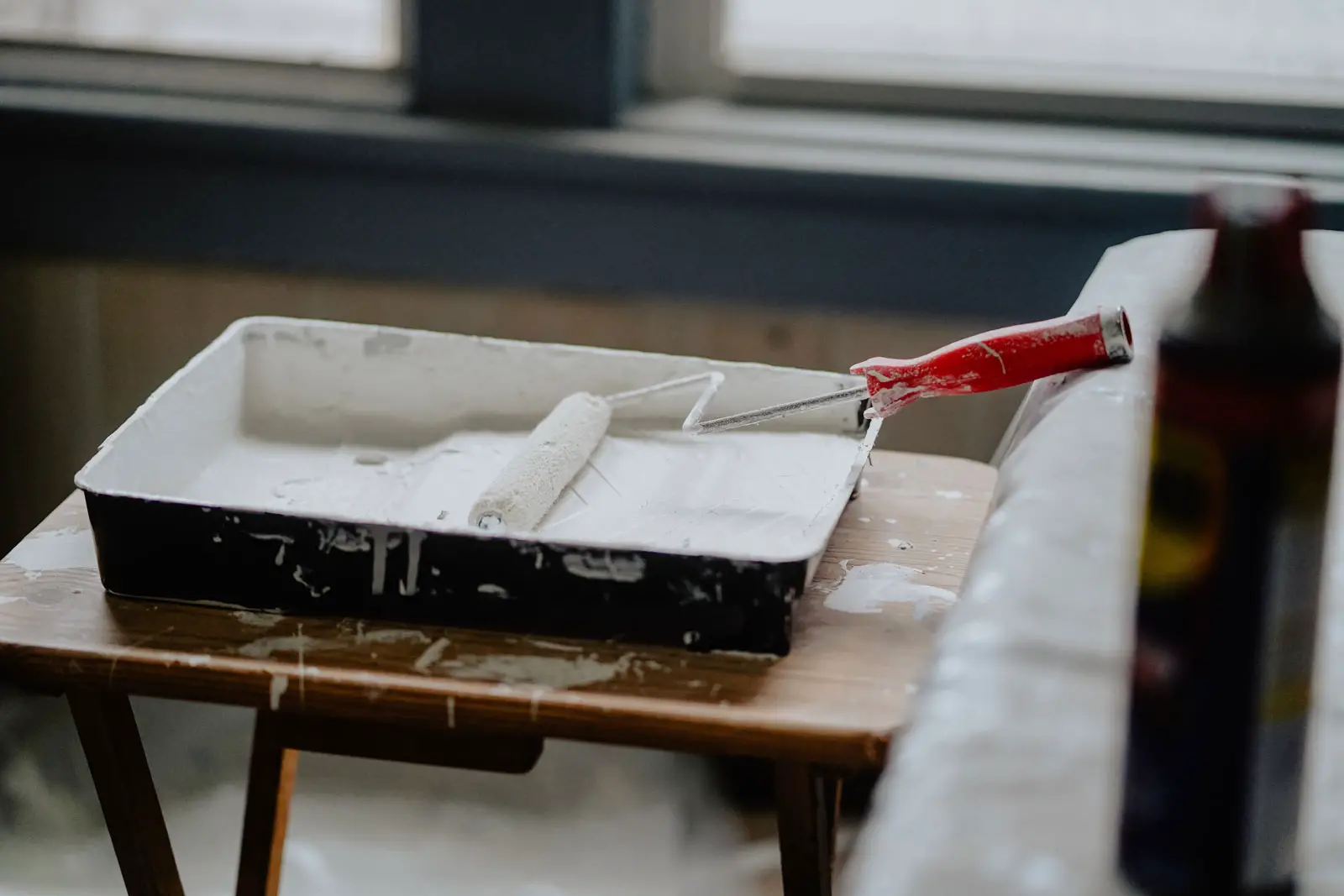
Baseboards: A Step-by-Step Guide
Painting baseboards can be a tedious task, but with the right tools and techniques, you can achieve a professional-looking finish. Here’s a step-by-step guide to get you started:
- Clean the baseboards with warm water and mild soap. Rinse thoroughly and let dry.
- Use painter’s tape to protect the walls and flooring from paint drips.
- Apply a thin coat of primer to the baseboards, making sure to brush in the direction of the wood grain. Let the primer dry completely.
- Apply a thin coat of paint, again brushing in the direction of the wood grain. Let the paint dry completely before applying a second coat.
- Once the paint is dry, carefully remove the painter’s tape.
In my experience, using a high-quality paint with a semi-gloss or high-gloss finish can help to create a durable and easy-to-clean surface. And don’t forget to invest in a good-quality brush to make the job easier and more efficient.
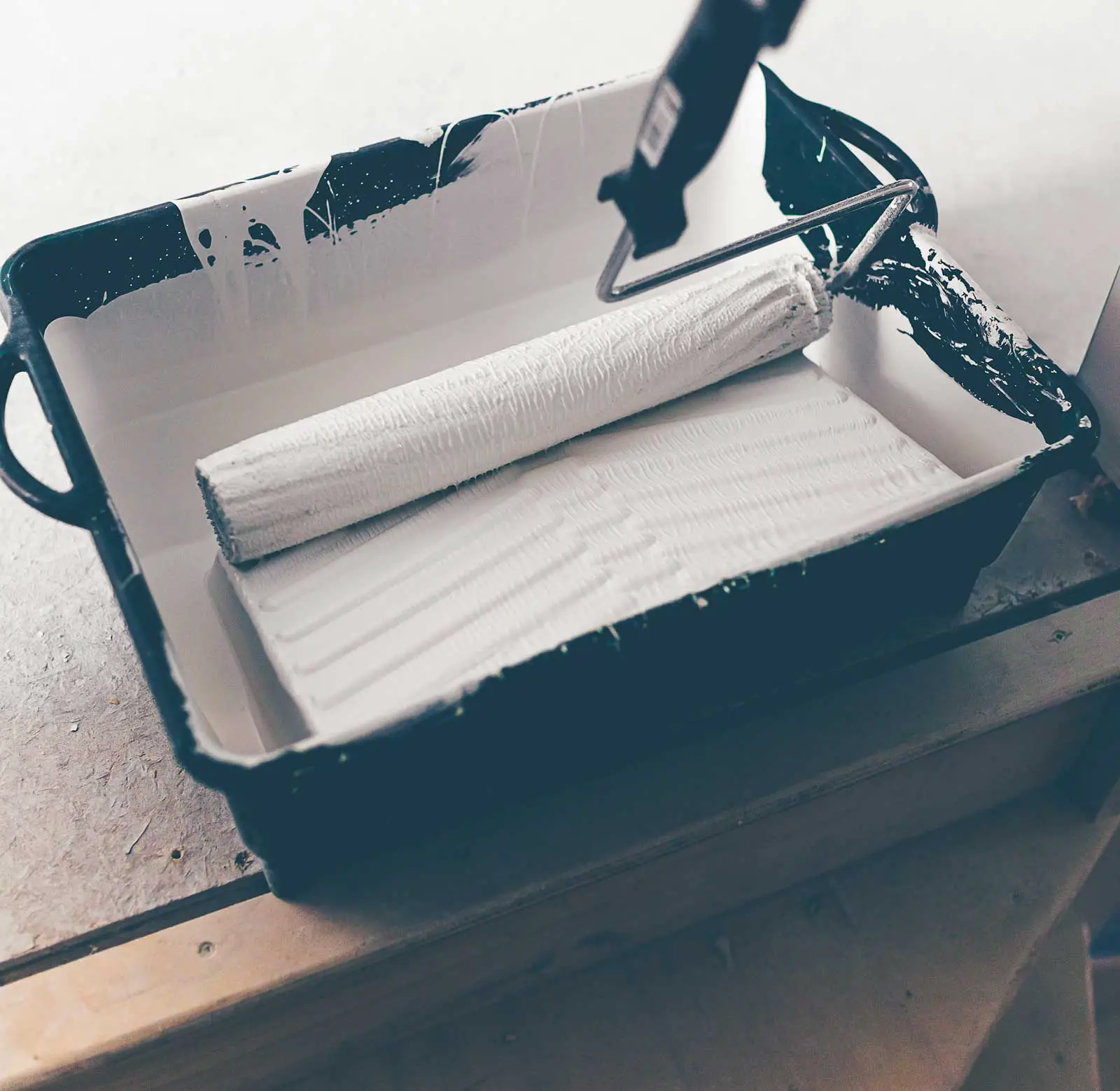
Complementing Design Aesthetics with Paint
When it comes to home design, every detail counts. From the color of your walls to the hardware on your doors, every element plays a role in the overall aesthetic of your space. One often overlooked aspect of design is the paint used on trim and baseboards. But with the right paint, you can take your home’s design to the next level.
The Farmhouse Look: How to Achieve It with the Right Trim Paint
If you’re going for a farmhouse look, choosing the right paint for your trim is crucial. Opt for a paint with a matte finish to achieve a rustic, weathered look. Colors like white, cream, and gray work well with this style, as they create a clean, fresh look that’s still warm and inviting. In my experience, Sherwin-Williams’ ProClassic Interior Waterbased Acrylic-Alkyd Enamel is a great choice for achieving the perfect farmhouse trim.
Modern vs. Traditional: Picking Paints That Elevate Your Design
Whether you’re going for a modern or traditional look, the right paint can elevate your design. For a modern look, choose a paint with a high-gloss finish in a bold color like black or navy. This will create a sleek, sophisticated look that’s sure to impress. In contrast, for a traditional look, opt for a paint with a satin finish in a classic color like white or beige. This will create a timeless, elegant look that’s perfect for any home.
White Walls vs. Colored Walls: Best Baseboard Colors to Complement
When it comes to baseboards, the color you choose will depend on the color of your walls. If you have white walls, a white baseboard is a safe choice that will create a clean, cohesive look. However, if you have colored walls, you’ll need to choose a baseboard color that complements your walls without overpowering them. In my experience, a light gray or beige baseboard works well with most colors, as it creates a subtle contrast without drawing too much attention.
Choosing the right paint for your trim and baseboards is an important aspect of home design. By considering factors like finish, color, and style, you can create a cohesive, polished look that will elevate your space. So next time you’re considering a home renovation, don’t forget to give your trim and baseboards the attention they deserve.
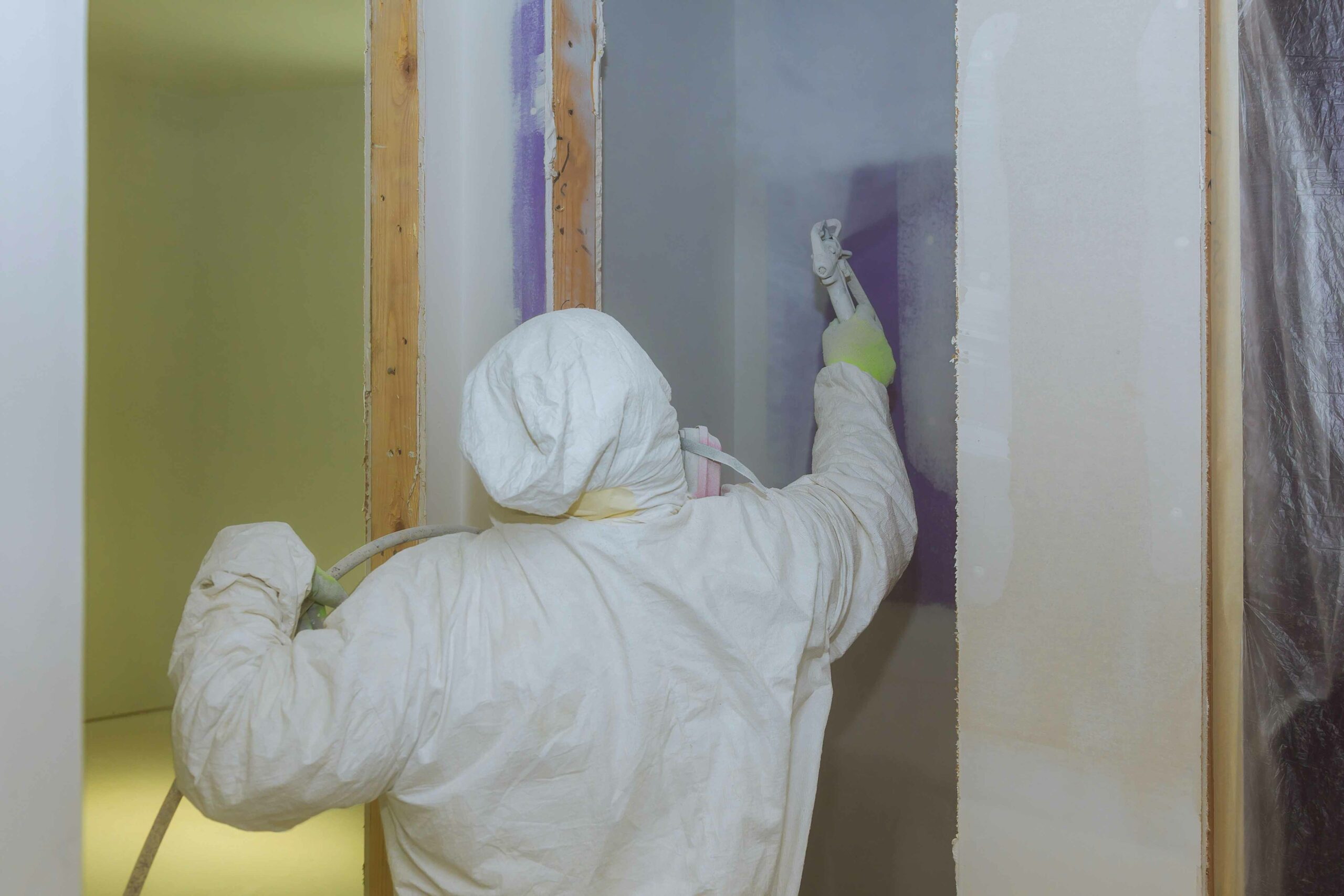
Preparing for the Paint Job
Before you start painting your trim and baseboards, it’s important to prepare the surface properly. This will ensure that the paint adheres well, looks smooth, and lasts longer. In this section, we’ll cover the key steps you need to take to prepare your trim and baseboards for painting.
Importance of a Smooth Surface: Sandpaper and Preparation
A smooth surface is essential for a professional-looking paint job. Sanding your trim and baseboards will remove any rough spots, bumps, or imperfections, and create a smooth surface for the paint to adhere to. In my experience, sanding is a crucial step that should not be skipped.
Start by using a coarse-grit sandpaper (around 80 grit) to remove any old paint or rough spots. Then, switch to a finer grit (around 120 grit) to smooth out the surface. Be sure to sand along the grain of the wood, and wipe away any dust with a clean, dry cloth.
In addition to sanding, it’s important to prepare the surface by cleaning it thoroughly. Use a mild detergent and warm water to remove any dirt, grease, or grime. Rinse the surface well with clean water, and allow it to dry completely before painting.
When and Why to Use Primer
Primer is a crucial step that can help improve the adhesion of the paint, and ensure that the final result looks smooth and even. In general, it’s a good idea to use a primer if:
- You’re painting over a dark or bold color
- You’re painting over a glossy or shiny surface
- You’re painting over a porous or uneven surface
In my experience, using a primer can help reduce the number of coats of paint you need to apply, and can help the paint last longer.
When selecting a primer, choose one that is compatible with the type of paint you plan to use. For example, if you’re using an oil-based paint, choose an oil-based primer. If you’re using a water-based paint, choose a water-based primer.
Painting Hacks: Painter’s Tape, Avoiding Brush Marks, and More
To ensure a professional-looking paint job, there are a few painting hacks you can use to make the process easier and more effective. Here are a few tips:
- Use painter’s tape to mask off areas that you don’t want to paint, such as door handles, light switches, or adjacent walls. This can help you achieve a clean, crisp edge.
- To avoid brush marks, use a high-quality brush with synthetic bristles. Dip the brush into the paint, and then tap it lightly against the side of the can to remove excess paint. Apply the paint in thin, even coats, and brush in the direction of the grain.
- If you’re painting a large area, consider using a paint sprayer. This can help you achieve a smooth, even finish in less time.
- Finally, be sure to allow the paint to dry completely before applying a second coat or removing the painter’s tape.
By following these tips, you can achieve a professional-looking paint job that will last for years to come.
Practical Tips and Advice
Are you ready to tackle painting your trim and baseboards? Here are some practical tips and advice to help you achieve a professional-looking finish.
Painting Without Sanding: Is It Possible
Sanding is a time-consuming and messy process. Luckily, there are options for painting trim without sanding. In my experience, using a deglosser is a great alternative to sanding. It works by breaking down the gloss of the existing paint, allowing the new paint to adhere better. Another option is using a bonding primer, which creates a strong bond between the old paint and the new paint. Keep in mind that while these methods can save time, they may not work for all surfaces. Always test a small area before committing to painting without sanding.
Cleaning Up: Dealing with Oil-Based Paint Spills
Oil-based paint spills can be a nightmare to clean up. But don’t panic, there are ways to tackle the mess. First, cover the spill with kitty litter or sawdust to absorb as much of the paint as possible. Once the majority of the paint is absorbed, use a scraper to remove any remaining paint. Next, use a cloth or paper towel to blot the area with mineral spirits or paint thinner. Be sure to wear gloves and work in a well-ventilated area. Finally, clean the area with soap and water.
Maintenance: Cleaning Trims and Baseboards
Once your trim and baseboards are painted, it’s important to maintain them. Regular cleaning can help prevent buildup and keep them looking fresh. In my experience, using a microfiber cloth and a mild cleaner is the best way to clean painted trim and baseboards. Avoid using abrasive cleaners or scrubbers, as they can damage the paint. For tough spots, try using a Magic Eraser or a soft-bristled brush. And remember to always test any new cleaning products on a small, inconspicuous area before using them on the entire surface.
There you have it, some practical tips and advice to help you achieve a professional-looking finish when painting your trim and baseboards. Happy painting!
Expert Picks and Recommendations
Are you looking for the best paint for your trim and baseboards? Look no further than our expert picks and recommendations. In this section, we’ll share our top product recommendations and where to buy them.
Products to Consider: Special Mention of ‘Sherwin Williams Extra White SW 7006’
In our experience, Sherwin Williams Extra White SW 7006 is the best paint for trim and baseboards. This paint is a high-quality, durable option that will provide a clean, crisp finish. It’s also easy to clean and maintain, making it a great choice for high-traffic areas.
But don’t just take our word for it. According to a paint pro at Real Simple, “You want to keep color temperature in mind when choosing a white trim paint…A warm white is a perpetual favorite that’s versatile and inviting, but is also the best choice to pair with other warm hues like reds, oranges or warm neutrals.” Sherwin Williams Extra White SW 7006 fits the bill, as it’s a warm white that pairs well with a variety of colors.
If you’re looking for a more budget-friendly option, Consumer Reports recommends Behr Marquee Exterior for exterior trim. This paint is almost as good as Sherwin Williams Extra White SW 7006, but it’s available for around $10 less per gallon.
Where to Buy: The Value of Specialized Paint Stores vs. General Retailers
When it comes to buying paint for your trim and baseboards, you have two main options: specialized paint stores and general retailers. While general retailers may be more convenient, specialized paint stores often offer a wider selection of high-quality paints and knowledgeable staff who can help you choose the best product for your needs.
In our experience, specialized paint stores like Sherwin Williams and Benjamin Moore are the best places to buy paint for your trim and baseboards. These stores offer a wide range of high-quality paints, as well as knowledgeable staff who can help you choose the best product for your needs. They also often offer free color consultations and other services to help you get the most out of your paint purchase.
In contrast, general retailers like Home Depot and Lowe’s may offer a more limited selection of paints, and their staff may not be as knowledgeable about the products they sell. However, they may be more convenient if you’re looking to buy other home improvement products at the same time.
When it comes to choosing the best paint for your trim and baseboards, we recommend Sherwin Williams Extra White SW 7006 for its durability and versatility. And when it comes to buying paint, we recommend specialized paint stores like Sherwin Williams and Benjamin Moore for their wide selection and knowledgeable staff.
Related & Frequently Asked Questions
Still got questions? No problem, I’ve got you covered.
Q: Should baseboards be satin or gloss?
A: For interior trim and baseboards, both satin paint and gloss finishes like semi-gloss paint are popular. Gloss provides a shiny finish which is easier to clean in high traffic areas, while satin gives a softer appearance, making it a personal preference based on the look you desire for your own home.
Q: What do professionals use to paint trim?
A: Professionals often choose acrylic latex paint or oil paint for trim work due to its durability. The best paint finish, like glossy paint or a high gloss finish, is selected based on the room’s needs and the desired appearance. Using the best paint brush ensures minimal brush strokes.
Q: Can I use wall paint on baseboards?
A: While you can use interior paint designated for walls on baseboards, opting for paints with a glossier finish or semi-gloss paint often provides the best results for durability and ease of cleaning.
Q: How many coats of paint on baseboards?
A: Achieving the best finish often requires two coats of paint on baseboards. Starting with a primer, especially on untreated wood trim or when changing to a significantly different color, ensures the most even and lasting result.
Q: Is oil-based paint good for baseboards?
A: Absolutely! Oil-based paint offers a durable finish suitable for high-traffic areas and wood trim, with the only downside being its longer drying time and volatile organic compounds (VOCs) content.
Q: What are the disadvantages of oil-based paint?
A: Oil-based paints, while excellent for durability and a high gloss finish, come with challenges like longer drying times, potential for yellowing, strong odor due to volatile organic compounds, and a need for paint thinner or mineral spirits for cleanup.
Q: How do you clean oil-based paint on baseboards?
A: For cleaning drips or spills from oil-based paints, a damp cloth with mineral spirits or paint thinner is the best option. Gentle rubbing will help remove the paint without damaging the baseboard paint.
Q: When should you use oil-based paint?
A: When seeking a long-lasting, smooth finish for interior walls or trim work, especially in rooms like the kitchen or living room that see a lot of activity, oil paint is a great way to go.
Q: Does oil-based paint need primer?
A: Certainly. Especially on untreated wood or for a drastic change in wall color, using a primer ensures the oil paint adheres well and provides the best results.
Q: How do I know if my trim is oil-based?
A: Test the trim with a cotton ball soaked in rubbing alcohol. If paint comes off, it’s likely a water-based variety like acrylic latex paint; if not, it’s oil-based.
Q: What is the most popular color for baseboards?
A: White remains the most popular choice for baseboards. However, best white paint colors can vary, and visiting a paint store can provide insights into trending and classic white trim colors.
Q: What are the best baseboard colors for white walls?
A: For white walls, contrasting trim paint colors, like soft gray or taupe, can add depth. But often, homeowners go with white for a cohesive look, making it a matter of personal preference.
Q: How To Choose Door and Trim Paint?
A: When selecting door and trim paint, consider factors like the room’s lighting, desired finish (matte paint, shiny finish, or semi-gloss paint), and compatibility with wall color. For a top-tier choice, Sherwin Williams Emerald is often recommended.
Q: Can You Paint Trim Without Sanding?
A: Sanding ensures better paint adhesion and reduces visible nail holes and imperfections. However, if sanding isn’t feasible, using a quality primer can help the paint bond well to the trim, especially for a first-time painting project.
